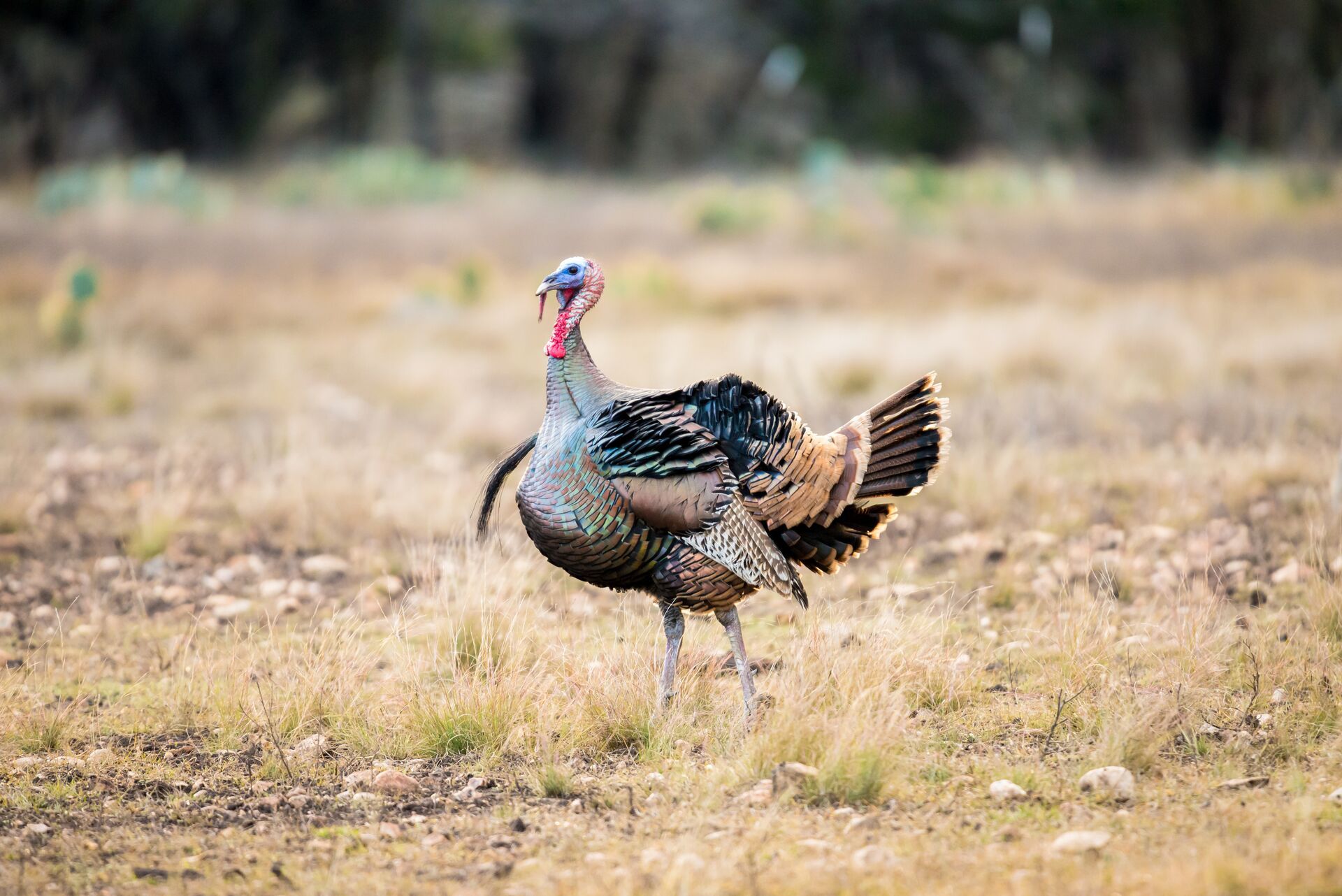Field Guide / Turkey
Turkey Talk: The Rio Grande Turkey

7 Minute Read
What makes turkey hunting such an exciting sport? Is it the stunning weather that typically accompanies a hunt?
Or, is it the interactive nature of turkey hunting and the opportunity to put into practice calls, strategies, and all the pre-season prep?
For any serious turkey hunter, it may be the sport's diversity. No hunt is ever the same, and with a spectrum of different turkey species on offer, there's always something to learn and grow from.
One of the most popular and challenging turkeys in this broad spectrum is the Rio Grande. This subspecies represents everything great about turkey hunting. Whether you want to complete your slam or are allured by the thrill of the Rio Grande, this guide has everything you need to know to take one of these stunning birds.
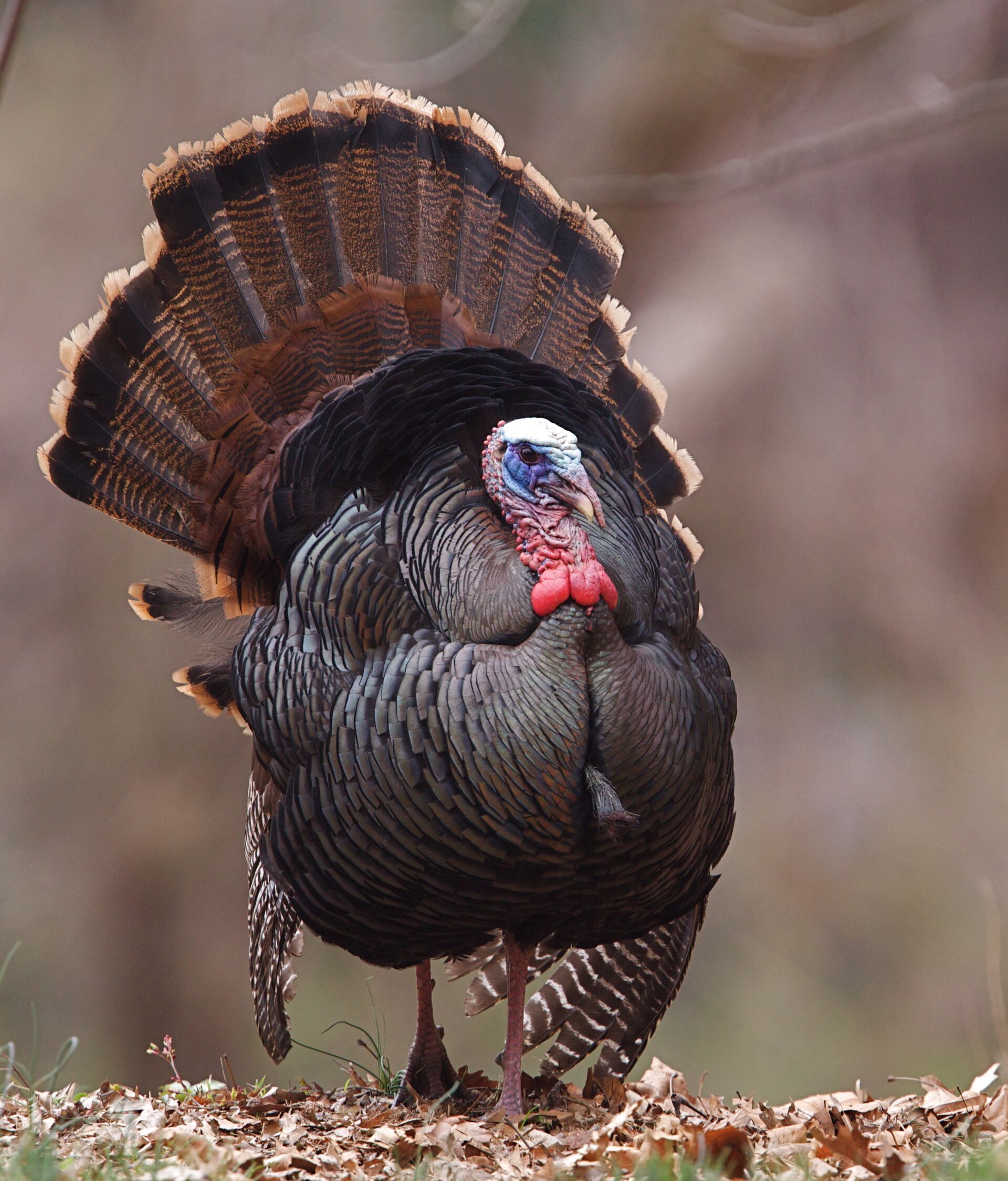
An Introduction to the Rio Grande Turkey
The Rio Grande has the most comprehensive range and most significant population of any of the turkey subspecies. Although almost made extinct in the 1800s and numbers subsequently dipped to 100,000 by 1920, the concerted effort of the Texas Parks and Wildlife Department and similar agencies helped bring these birds back from the brink.
Habitat, Range, and Physical Characteristics
Today, the Rio Grande turkeys are found in the plains and semi-arid regions of Texas, Oklahoma, and parts of Kansas. There is also a stable population down south in Mexico.
Highly adaptable and found in the Southern Great Plains today, the Rio inhabits brushy areas close to water sources like rivers and streams. It favors any wooded habitat with mesquite, oak, and juniper. They can be found at elevations up to 6,000 feet but prefer wooded open country.
At full maturity, Rios can stand up to four feet tall and display proud bronze-iridescent plumage with copper, red, and green shades that can shine through; the tail is tipped with a yellowish buff.
They're relatively long-legged (adapted from walking across open terrain) and around the same size as the eastern variety. Males can be distinguished from their beard-like feathers, which protrude from the chest area.
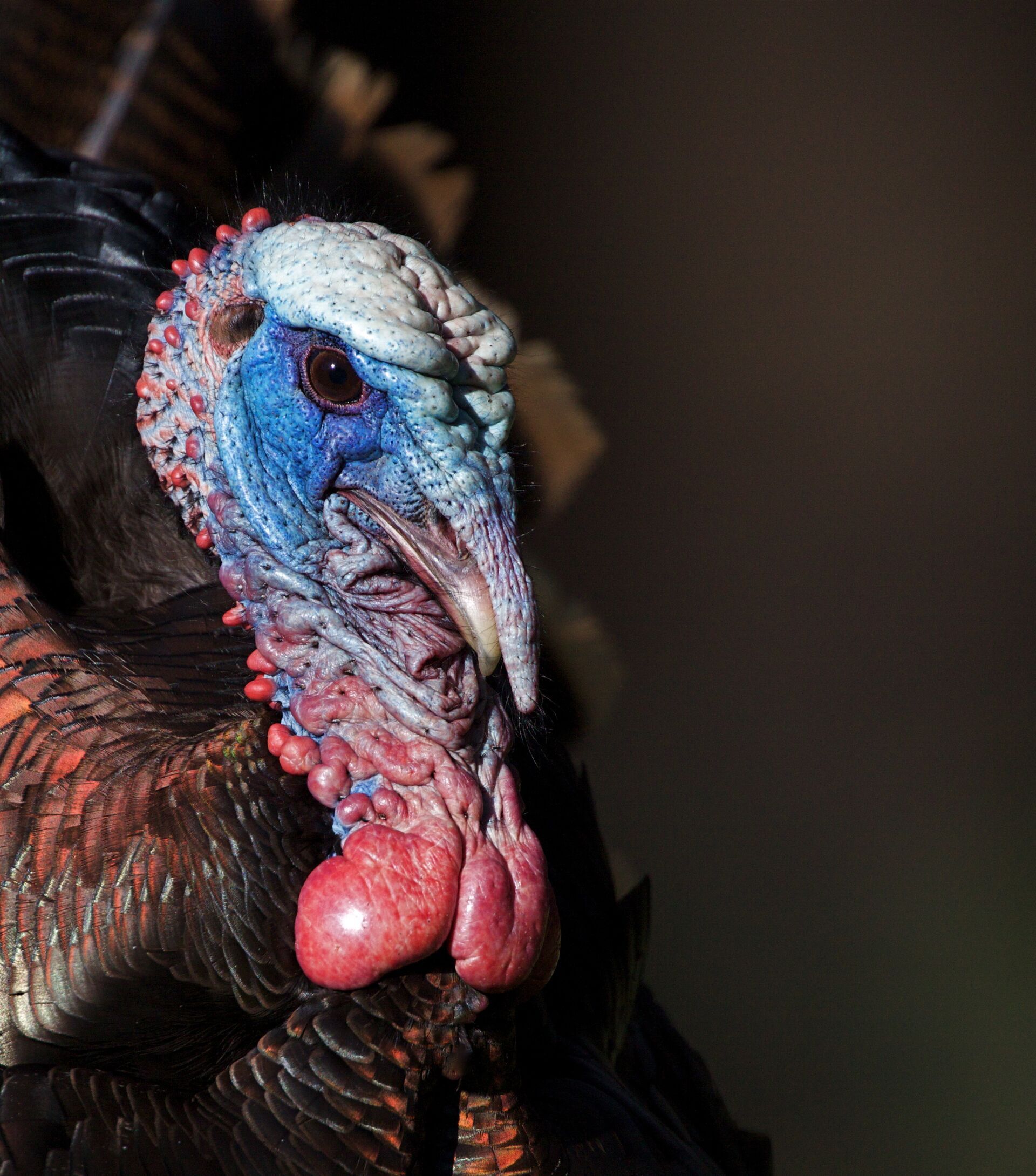
Behaviors
Rio Grandes are naturally social birds that will form flock structures led by a dominant male. These flocks will include several hens as well as young birds. Dominance is established both through vocalizations and behaviors.
During the breeding seasons, toms will strut, fan out their tails, make loud vocalizations, and their plumage, all to attract hens. Birds will nest in early Spring (Texas), establishing themselves in nests of brush, grass, or leaf litter.
They are a gregarious species and will shift their range based on seasonality and food availability.
Rio Grande Sounds
Various vocalizations and body language indications maintain social hierarchies and group dynamics. These can communicate submission, dominance, and preparedness to reproduce and sustain group contact, such as between a hen and its poults.
Three must-know Rio Grande turkey calls include the yelps, clucks, and gobbles, which indicate:
- Yelps are used for various communication methods. However, hens commonly employ them as a rallying call for young poults. Hens also use yelps to communicate with gobblers during the mating season or simply as a call of attention.
- A cluck is a short, sharp sound that draws attention, such as a hen reassuring a gobbler that she is waiting. A cluck followed by a purr is often a sign of contentment, especially when birds are flocked up.
- Gobbles are the typical gurgling noise used by males to indicate their presence.
Understanding these calls can help you call in a bird during your next hunt.
Eating Habits
The Rios are natural foragers who spend most of their day pecking away at a diverse range of food due to their omnivorous diet, which leverages their eyesight and evolved feet to spot and scratch. They'll feed on insects, invertebrates, fruits, berries, grains, and seeds and even eat small reptiles and amphibians.
Due to their high metabolism and opportunistic nature, Rios often feed to supplement their energy needs and will target a range of different zones to access available food sources.
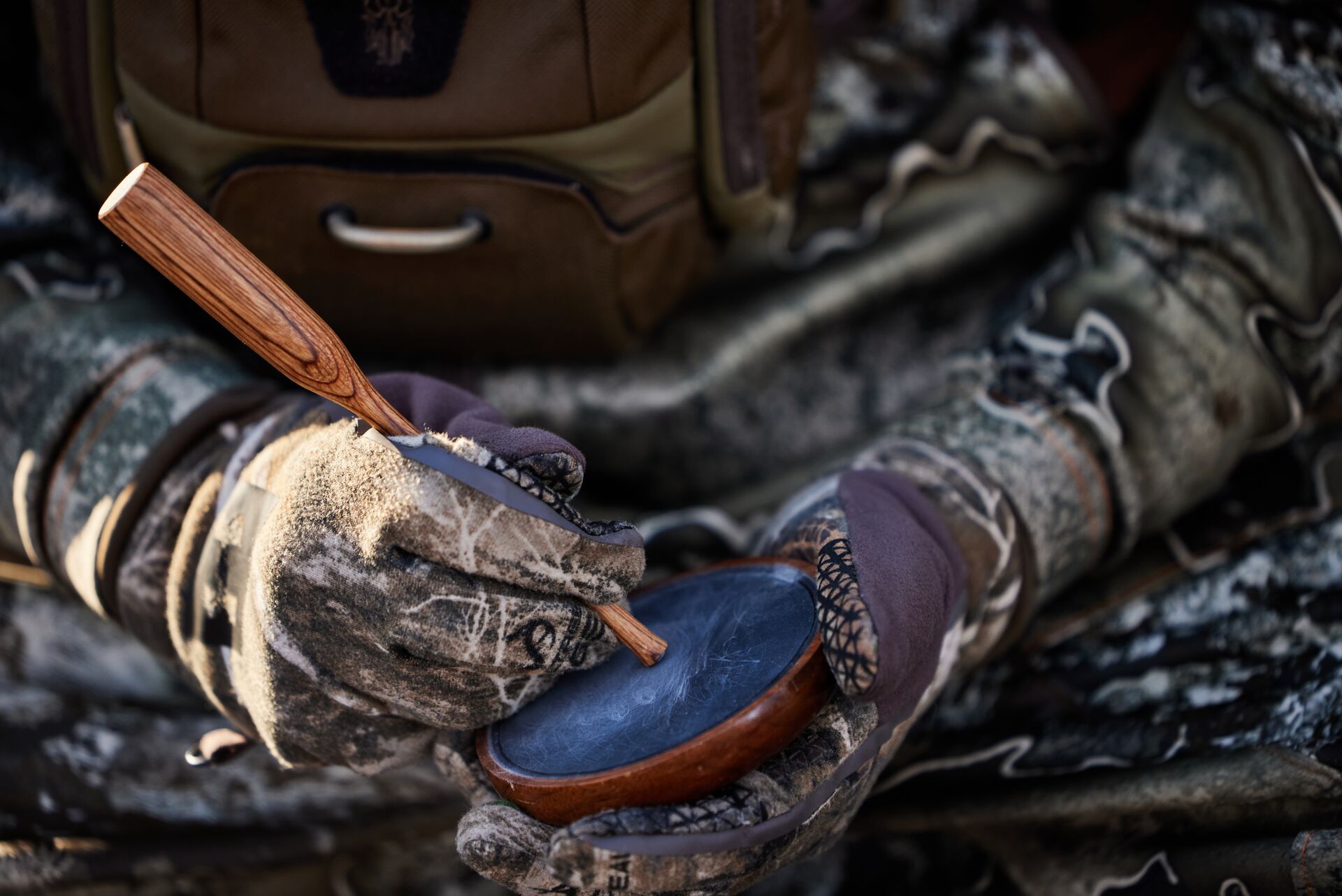
Hunting Strategies to Bag a Bird
To increase your chances of harvesting one of these birds this season, focus on two high-impact areas:
- Spend time in the areas where the birds are and learn what they do after they fly down.
- Practice shooting from different angles, dialing in the choke on your shotgun, and patterning to ensure you hit vital areas necessary for a kill.
Then, leverage the additional strategies below to prepare for your next Rio hunt.
Start With Scouting
Rios are creatures of habit. Once you've targeted roosting sites, you can accurately predict their feeding areas and travel routes.
To get started, download the HuntWise app and leverage the mapping features to target creek fields, bottoms, or timbered areas where birds are likely to roost. Proximity to water is also paramount, and mixed environments that contain two or all three of these diverse topographical features close to a water source are likely to be hotspots.
Once you've determined these zones, head into the field to confirm bird presence with scratchings, tracks, and scat. Consider using trail cameras to pick up on early-season patterns and movement.
Calling Techniques
Rios are profoundly communicative and responsive birds, meaning hunters will likely have some success when using calls.
They're less aggressive than their subspecies, so stick to clear yelping to hit those different communicative angles and leave sufficient pause to wait for a gobble in response.
A cluck can also succeed in drawing in gobblers; however, keep them soft.
Decoy Setup
Due to the often open expansive zones that Rios inhabit, realism is a huge determining factor in the success of your decoy setup.
A simple 1/4 strut jake and hen setup should do the trick so long as the decoys are well placed and somewhat covered by the natural landscape, showcasing bits and pieces from different angles.
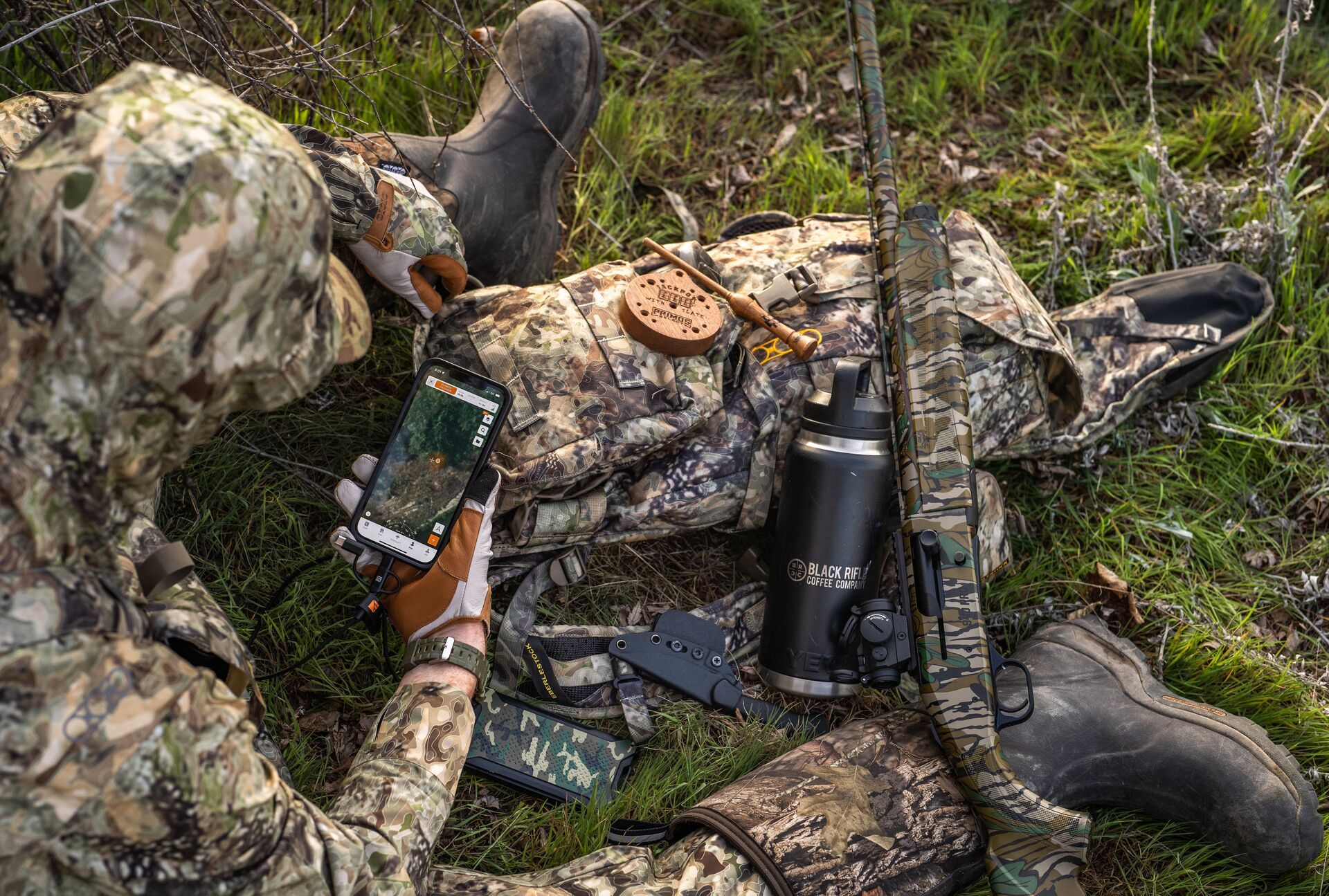
Make Sure You Have the Right Gear
As with any hunt, the right gear is essential for a successful turkey hunt. Here are a few things to consider as you plan for the season.
Camouflage
Appropriate camouflage patterning is essential, and investing in high-quality camouflage gear specially designed for turkey hunting is better. Seek out pants, shirts, jackets, and headgear made from lightweight fabric for comfort on long, hot days.
Patterning is essential for resembling the environment you plan to hunt in, so look for brown and gray with some touches of green or a sandier patterning if you're planning to hunt in the more arid regions.
Firearm
You can't go wrong with a 12- or 20-gauge shotgun with a short baller length (around 24-26 inches), as this will help you angle the firearm quicker and move through cover.
A full or extra choke will present a denser patterning, which is essential for turkey hunting, especially when you are pushing the range. Regarding shot sizes, #4 to #6 will produce the best results, depending on the choke.
Add Ons
Blinds, turkey vests, and locator calls are all nice additions to the hunting experience once you have the fundamentals covered.
Check Local Regulations
Before your hunt, check the local regulations for where you plan to hunt.
The season dates will vary depending on the state, and in some cases, county turkey hunting generally takes place during the spring months. For example, in Texas, the Rio Grande season will fall from mid-March until mid-May. The turkey season may also open during the fall months.
Hunters are required to purchase turkey tags before the season begins. These tags must be carried during the hunt and immediately completed upon turkey harvesting. Most states now offer electronic tagging options, where hunters can report their harvest online or via a mobile app.
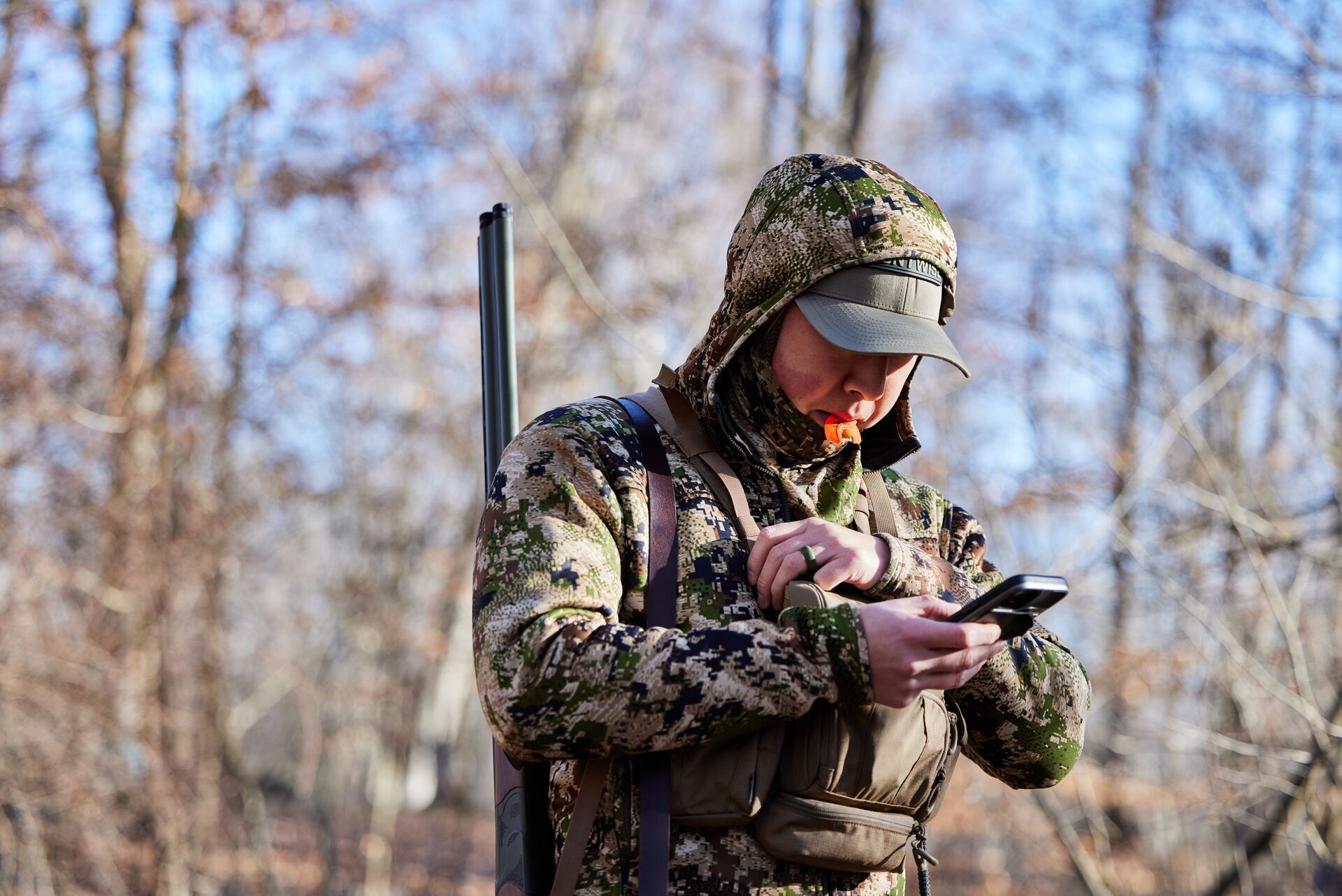
Bring Home a Rio Grande Turkey With HuntWise
Whether you're completing a slam or are looking to push your turkey hunting skills to the limits, the Rio Grande is one of the top birds to chase.
With the tips above, plus the HuntWise app's mapping, weather, and forecasting capabilities, you'll be one step closer to bagging an elusive Rio.
The best way to use HuntWise and improve your chances of bringing home one of these birds is to download and explore the app before it's time to get into the field. Take time to e-scout and mark potential roosting areas and locations for your blind that position you in an ideal spot to catch turkeys before they know you're there.
Plan with the best insights you'll find in a hunting app! Download HuntWise and explore the app — free — for your first week.
Try HuntWise For Free
Start your risk-free 7-day trial now!
More Content Like This
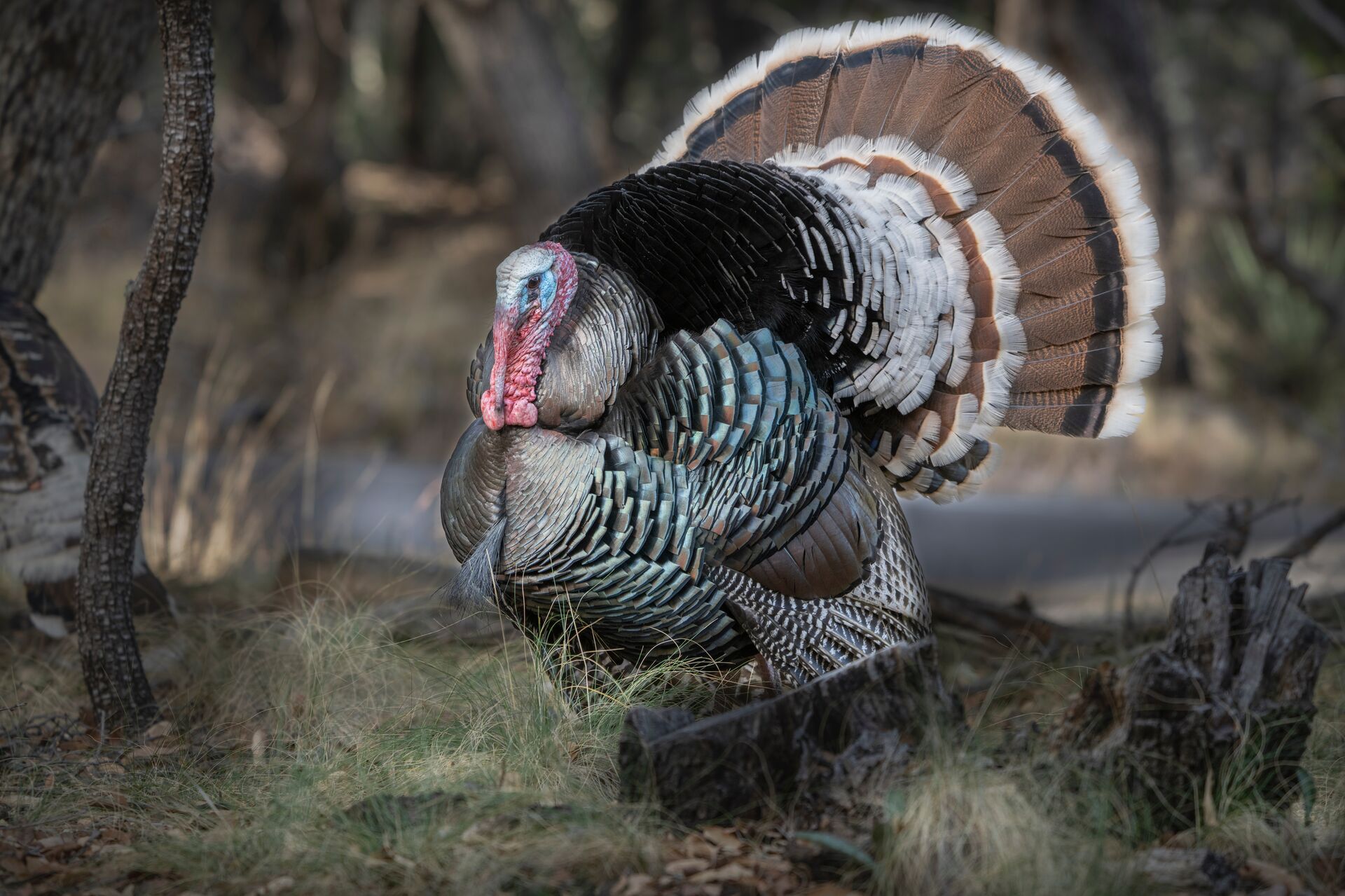
Turkey Talk: All About Gould's Turkey
While it may be a lesser-known subspecies, that doesn't mean this bird is any less impressive. Read More
Read More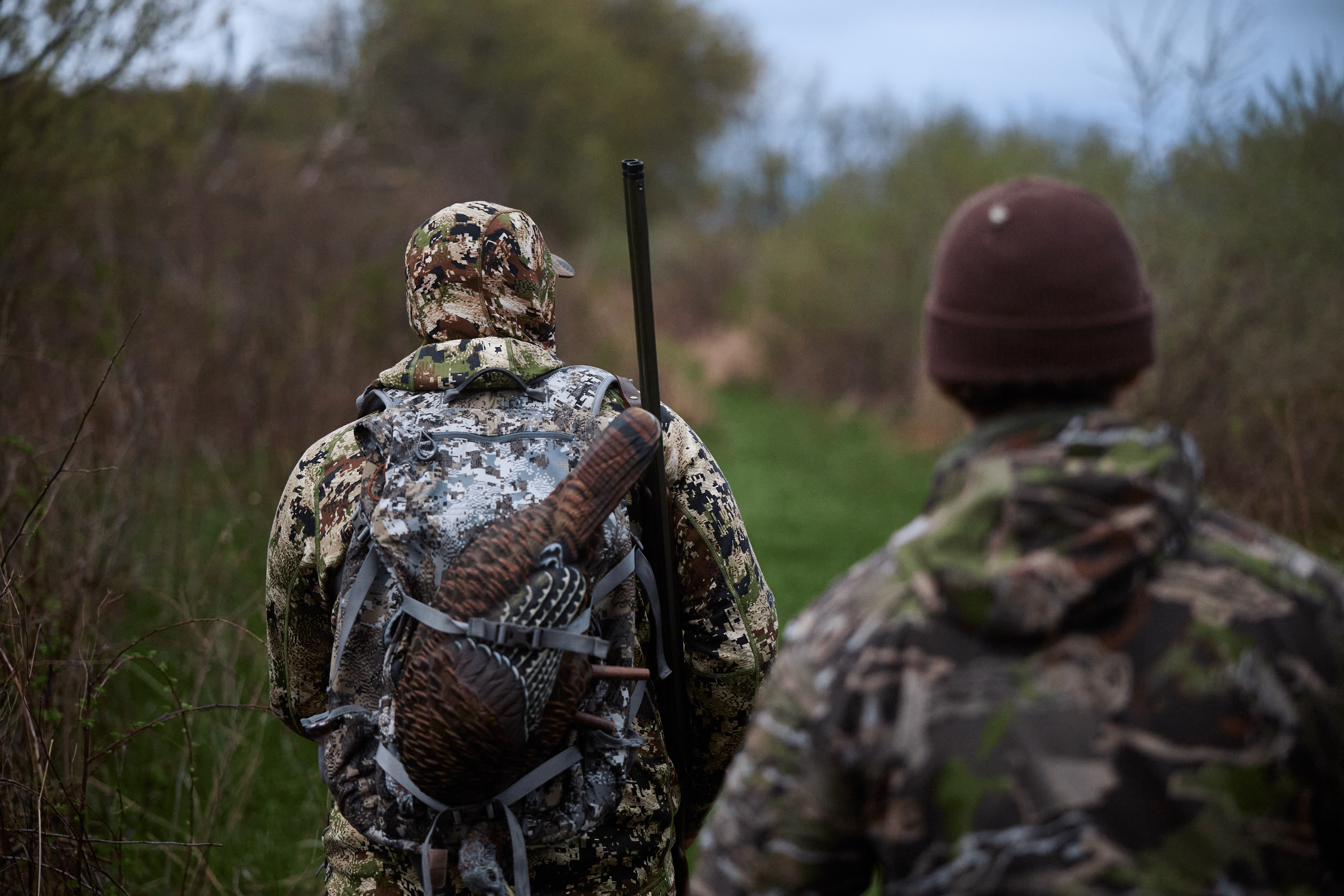
When Is Virginia Turkey Season?
With a generous hunting season that covers both spring and fall, backed by a strong hunting tradition, it's no surprise that Virginia is a hot spot for turkey hunters from all over the country. Read More
Read More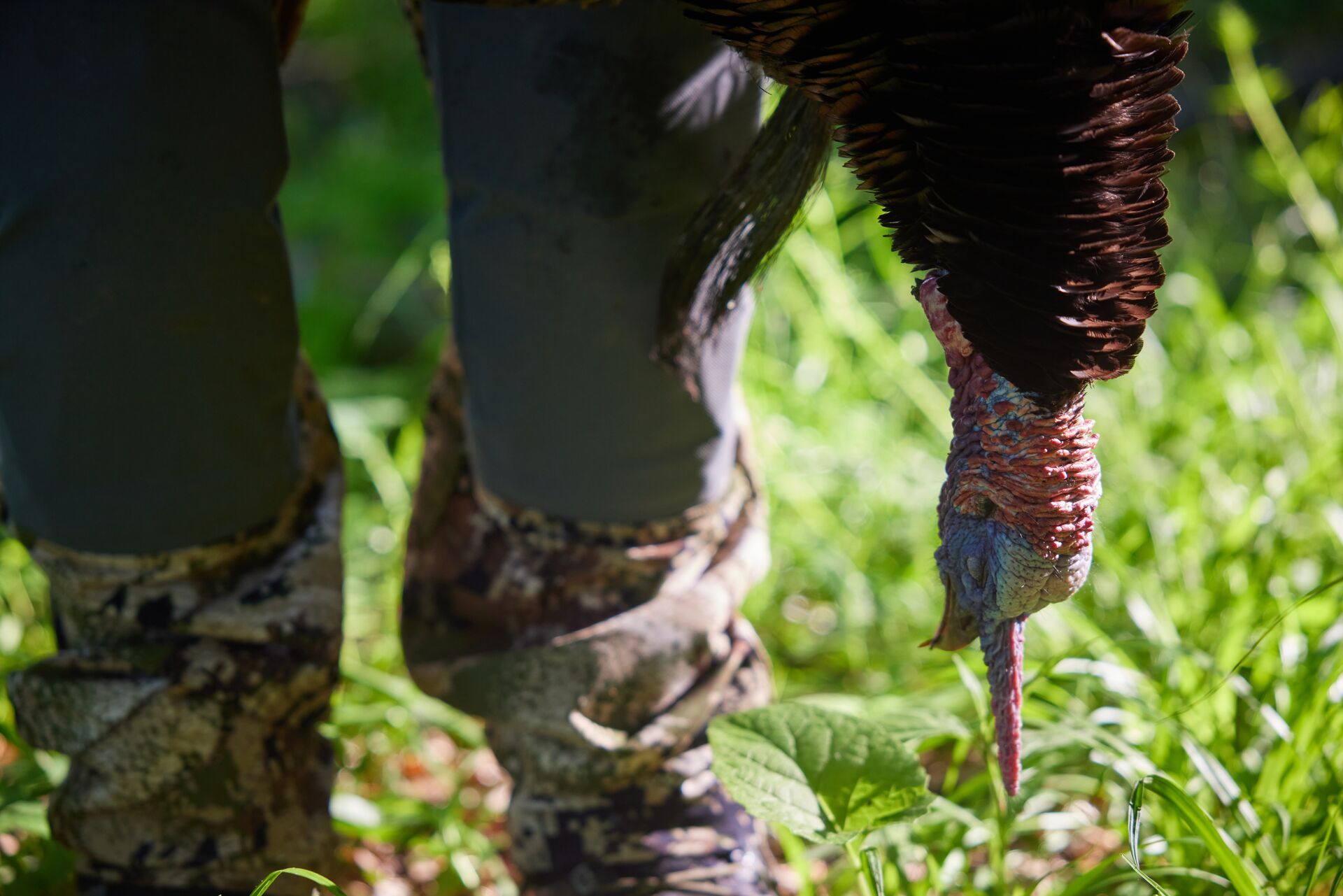
Turkey Hunting: What to Do After the Shot
You've just shot a turkey, and now you're faced with the question, "What do I do now?" Read More
Read More Turkey
TurkeyTurkey Talk: All About Gould's Turkey
By Teri Williams | 03/07/2024While it may be a lesser-known subspecies, that doesn't mean this bird is any less impressive. Read More
Read More Turkey
TurkeyWhen Is Virginia Turkey Season?
By Teri Williams | 04/08/2024With a generous hunting season that covers both spring and fall, backed by a strong hunting tradition, it's no surprise that Virginia is a hot spot for turkey hunters from all over the country. Read More
Read More Turkey
TurkeyTurkey Hunting: What to Do After the Shot
By Travis Hawkins | 04/10/2024You've just shot a turkey, and now you're faced with the question, "What do I do now?" Read More
Read More
1 of 3
